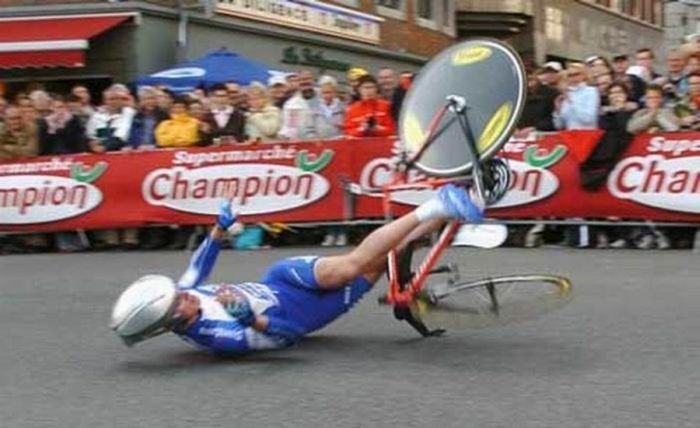|
|
Bicycle Fall
|
With a chain drive transmission, a chainring attached to a crank drives the chain, which in turn rotates the rear wheel via the rear sprocket(s) (cassette or freewheel). There are four gearing options: two-speed hub gear integrated with chain ring, up to 3 chain rings, up to 11 sprockets, hub gear built in to rear wheel (3-speed to 14-speed). The most common options are either a rear hub or multiple chain rings combined with multiple sprockets (other combinations of options are possible but less common).
With a shaft drive transmission, a gear set at the bottom bracket turns the shaft, which then turns the rear wheel via a gear set connected to the wheel's hub. There is some small loss of efficiency due to the two gear sets needed. The only gearing option with a shaft drive is to use a hub gear.
• Steering and seating
The handlebars turn the fork and the front wheel via the stem, which rotates within the headset. Three styles of handlebar are common. Upright handlebars, the norm in Europe and elsewhere until the 1970s, curve gently back toward the rider, offering a natural grip and comfortable upright position. Drop handlebars "drop" as they curve forward and down, offering the cyclist best braking power from a more aerodynamic "crouched" position, as well as more upright positions in which the hands grip the brake lever mounts, the forward curves, or the upper flat sections for increasingly upright postures. Mountain bikes generally feature a 'straight handlebar' or 'riser bar' with varying degrees of sweep backwards and centimeters rise upwards, as well as wider widths which can provide better handling due to increased leverage against the wheel.
|
|









